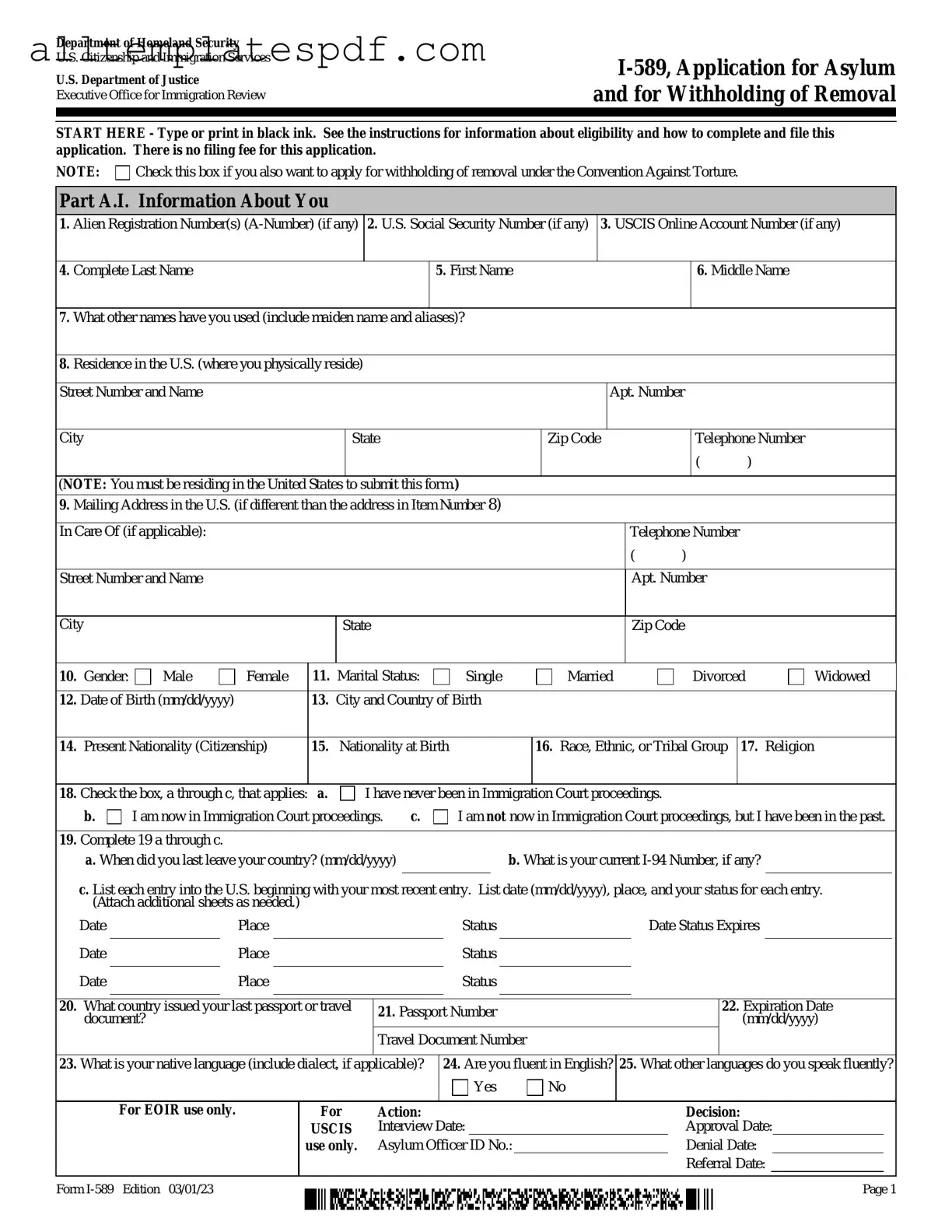Filling out the USCIS I-589 form can be a complex process. Many individuals make common mistakes that can delay their application or lead to denial. One frequent error is providing incomplete information. Every section of the form must be filled out thoroughly. Leaving blanks can raise red flags and result in a request for additional information.
Another common mistake is failing to sign the form. An unsigned application is considered incomplete. Ensure that all required signatures are present before submission. Additionally, some applicants forget to include supporting documents. These documents are crucial for establishing eligibility for asylum. Missing documents can weaken a case significantly.
Many people also struggle with the accuracy of their information. Providing inconsistent or incorrect details can create confusion. It is essential to double-check all personal information, including names, dates, and addresses. Similarly, using outdated or incorrect addresses for mailing can lead to lost applications or delays in processing.
Some applicants neglect to pay attention to deadlines. Submitting the form late can result in automatic denial. It is important to know the filing deadlines and plan accordingly. Furthermore, not keeping copies of submitted forms is another oversight. Retaining copies can be beneficial if issues arise during the review process.
Language barriers can also contribute to mistakes. If English is not your first language, consider seeking help from a trusted individual or professional. Misinterpretation of questions can lead to incorrect answers. Lastly, many applicants fail to seek legal advice when needed. Consulting with an immigration attorney can provide clarity and ensure that the form is filled out correctly.
